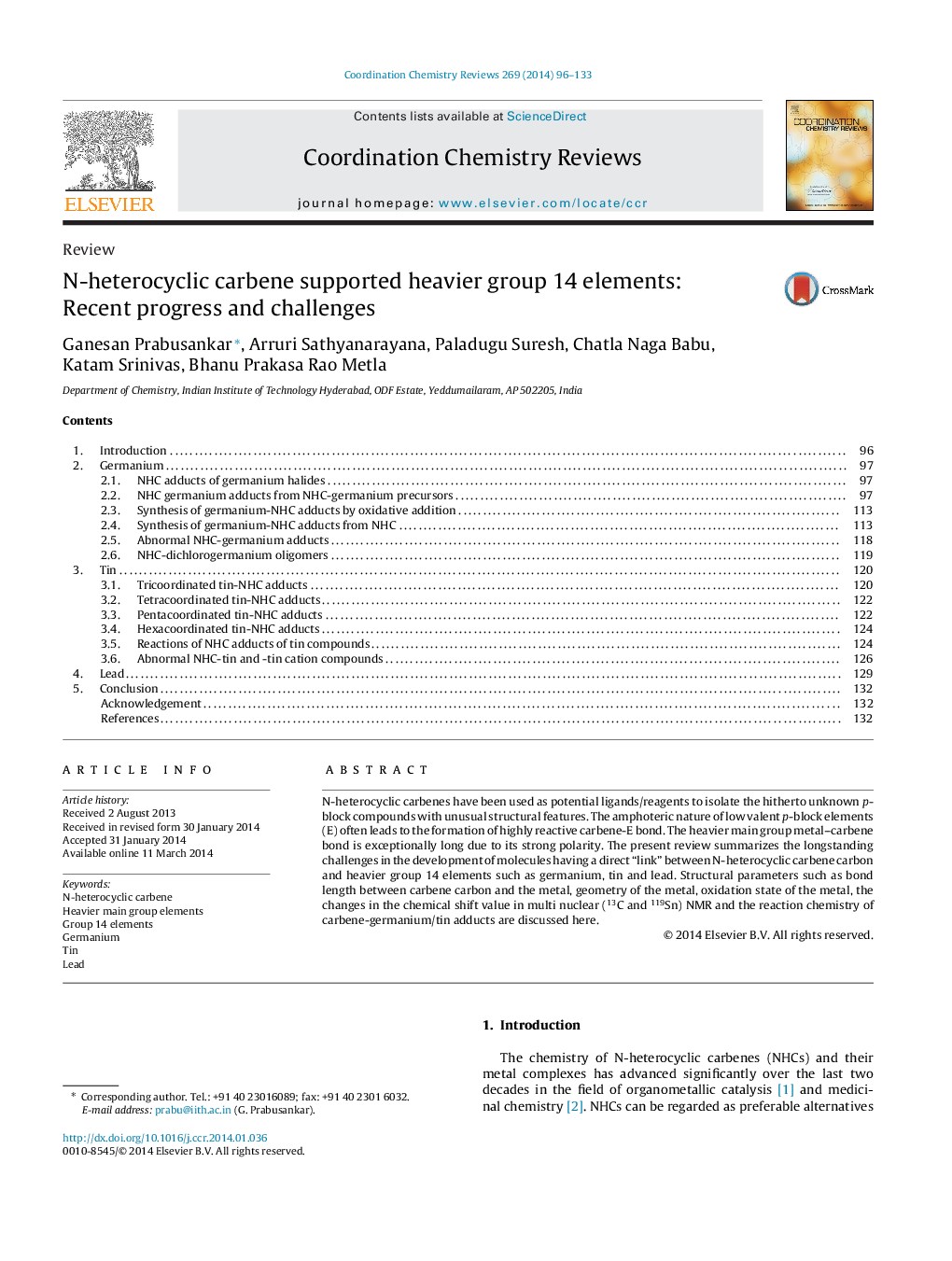| Article ID | Journal | Published Year | Pages | File Type |
|---|---|---|---|---|
| 1300987 | Coordination Chemistry Reviews | 2014 | 38 Pages |
•N-heterocyclic carbene-germanium, -tin or -lead compounds.•Structural, bonding and spectral properties.•Nature of coordination environment and geometry.•Overview of the reactivity.
N-heterocyclic carbenes have been used as potential ligands/reagents to isolate the hitherto unknown p-block compounds with unusual structural features. The amphoteric nature of low valent p-block elements (E) often leads to the formation of highly reactive carbene-E bond. The heavier main group metal–carbene bond is exceptionally long due to its strong polarity. The present review summarizes the longstanding challenges in the development of molecules having a direct “link” between N-heterocyclic carbene carbon and heavier group 14 elements such as germanium, tin and lead. Structural parameters such as bond length between carbene carbon and the metal, geometry of the metal, oxidation state of the metal, the changes in the chemical shift value in multi nuclear (13C and 119Sn) NMR and the reaction chemistry of carbene-germanium/tin adducts are discussed here.
Graphical abstractFigure optionsDownload full-size imageDownload high-quality image (120 K)Download as PowerPoint slide
